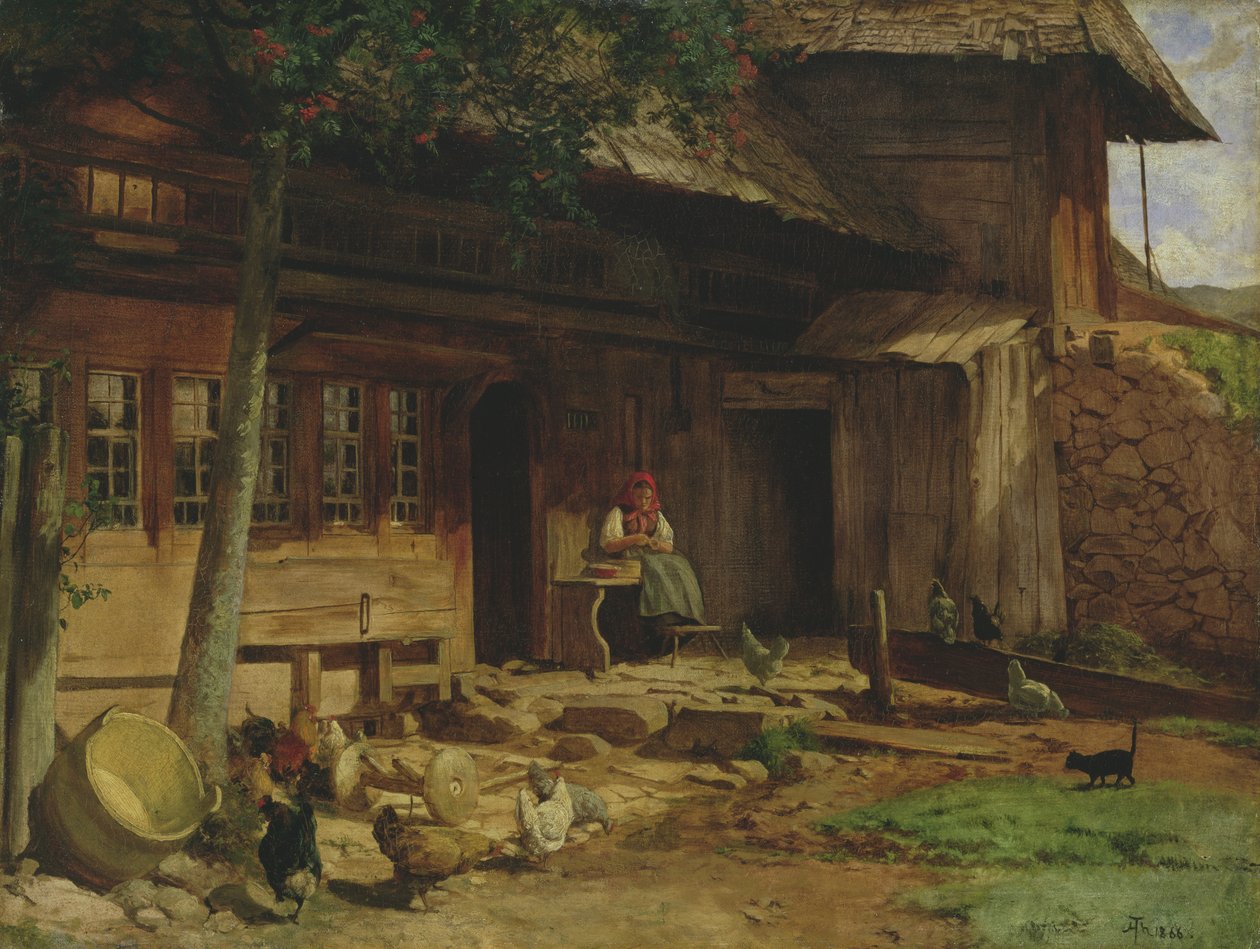Hans Thoma
Scheunenauffahrt am Elternhaus in Bernau, (Barn Entrance at the Family Home in Bernau), 1861

Hans Thoma moved to Karlsruhe1 in 1859 and there enrolled at the Grossherzogliche Kunstakademie, where his teachers would include no less a figure than Johann Wilhelm Schirmer.2 In a rather weary-sounding journal entry of 1861, the young painter tells of his excitement at a planned visit to his home town of Bernau:
Tomorrow evening I shall already be at home, sitting at the table with my mother and sister. How I am looking forward to the fortnight I shall spend there; I have lately felt so listless and apathetic. I hope that being at home will reinvigorate me and supply me with new material for creating things.3
The vitality and inspiration that Thoma did indeed derive from his visit came not just from his family but also from the house itself, which he captured in this exceptionally fresh watercolour study done in the same year as the above journal entry. Having selected portrait format, the painter depicts the back of a typical Black Forest farmhouse, viewed from an angle. The foreground is delimited by the stones piled up to form a ramp leading into the barn. Discernible in the distance behind the ramp is the hilly landscape beyond. Much of the wood-shingled roof is obscured behind a tree bearing red fruits. Below it, and hence also shaded by it, is the entrance area, only the bare bones of which are sketched in. The foreground containing a large pile of brushwood, some logs and a small mound of hay, and brought to life by the chickens scratching in the dirt, attests to the hard labour required of country folk. The house still stands, though the part of it that once adjoined the barn that Thoma selected as his motif has not been preserved as shown here. The painting thus doubles as a historical record, affording us a glimpse of the world in which the young painter grew up.
Later, in 1866, Thoma would revisit this work and use it as a model for an oil painting of the house of his birth (fig. 1). This time he opted for landscape format and homed in on the house itself, whose architecture here is rendered in considerably more detail. This evokes a feeling of intimacy, especially as seated on a bench next to the entrance is the artist’s mother, absorbed in her work.4
In the years thereafter, too, Thoma would repeatedly devote himself to motifs from his home in the Black Forest, creating works that are similarly expressive of his deep attachment to his roots.
 Fig.1 Hans Thoma, Das Elternhaus des Künstlers (The House of the Artist’s Parents), 1866, oil on cardboard, 62.5 × 82 cm, Hamburger Kunsthalle inv. no. 1541
Fig.1 Hans Thoma, Das Elternhaus des Künstlers (The House of the Artist’s Parents), 1866, oil on cardboard, 62.5 × 82 cm, Hamburger Kunsthalle inv. no. 1541
Footnotes
-
Hans Thoma. Stationen eines Künstlerlebens, exh. cat. Hans-Thoma-Kunstmuseum Bernau 2014, Petersberg 2014, p. 326. ↩
-
Johann Wilhelm Schirmer (1807–1863) was not only the first director of the Karlsruhe Art Academy founded by Frederick I, Grand Duke of Baden (1826–1907) but also an influential figure in the development of landscape painting in nineteenth-century Germany. ↩
-
Hans Thoma, Im Herbst des Lebens, Munich 1909, p. 32. ↩
-
Katalog der Meister des 19. Jahrhunderts in der Hamburger Kunsthalle, coll. cat., edited by Eva Maria Krafft and Carl-Wolfgang Schümann, Hamburg 1969, p. 334. ↩